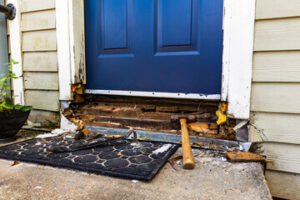Pianos are beautiful musical instruments that can inspire creativity and instill a sense of peace. But moving them can be a complex task that requires specialized equipment and experience.

If you are planning to hire movers, make sure they offer insurance that covers damage during transport. You can also ask if they specialize in moving different types of pianos. Contact Piano Movers North Charleston SC for professional help.
Professional Piano Movers have the experience and equipment to handle even the most delicate instruments. They understand the unique needs of each type and size of piano and employ specific techniques to prevent damage during transit. In addition, they take into account environmental factors such as temperature and humidity to ensure the piano arrives in optimal condition at its new home.
Pianos are delicate, heavy objects that require careful handling. Attempting to move them on your own or with the help of inexperienced friends can lead to expensive damage and frustrating delays. Inexperienced movers may also neglect to take basic safety precautions, leaving the instrument vulnerable to scratches and dents.
Before moving day, carefully measure doorways, hallways, and staircases to confirm that the piano will fit through them. Also, remove any obstacles that could obstruct the path of travel, such as furniture or clutter. Also, make sure that the movers are adequately insured in case of any accidents during the move.
It’s also a good idea to invest in protective materials like thick furniture blankets, plastic coverings, and stretch wrap. These supplies will not only protect the piano from external damage, but they’ll also shield walls and doors from scuffs and marks. Lastly, consider investing in ramps and stair rollers to make it safer to navigate stairs.
When it comes to transporting your piano, be sure to use an enclosed, climate-controlled truck. This will prevent the wood from expanding or contracting during transportation, which can affect the sound quality and structural integrity of the piano. Also, make sure to pack items strategically around the piano so that it doesn’t shift during transit.
Once the piano reaches its destination, carefully place it in the designated area. The movers will take into consideration acoustics and lighting to ensure the piano is properly aligned with its keyboards and pedals. They’ll also provide guidance on maintenance and care. In addition, if you need any additional help setting up your piano, they’ll be happy to assist.
Time
Professional piano movers have the knowledge and experience to move your instrument quickly and safely. They know how to plan and execute the move efficiently, reducing your stress level and saving you money. They will also ensure your piano is delivered to its new home in good condition. They will assess your property and determine a safe route to transport the piano. They will use specialized dollies, straps and padding to protect the piano from scratches or damage. They will also have the right equipment to maneuver your piano through tight corners or stairs.
The size and type of your piano contributes to the cost of moving services. Upright pianos are extremely top-heavy and have delicate legs, while grand pianos have a larger frame and require more labor and specialized equipment to move. If your piano needs to be disassembled or reassembled, this will increase the overall cost of the move. The total distance of the move also impacts the cost. Long-distance moves require more planning, time and resources than local moves.
Attempting to move a piano yourself requires substantial manpower and can be physically challenging for even the fittest of people. Using improper lifting techniques can cause severe back injuries, sprains and strains. Having the right equipment makes the job much easier, preventing injuries and saving you from having to spend more money on medical bills. Professionals have specialized equipment such as padded piano dollies and straps that distribute the weight evenly, making it easy to move your instrument without injuring yourself.
Another advantage of hiring professional piano movers is that they are fully insured, ensuring your investment in the instrument will be protected in the unlikely event of an accident or issue during the move. In addition, fully insured movers are more likely to be trustworthy and dependable, offering reliable service you can depend on.
While moving a piano by yourself can seem like a great way to save money, it’s often more expensive in the long run. Trying to handle the move yourself can damage your precious instrument, and you may end up paying for repairs or replacements out of pocket. Professional movers will ensure your piano is transported with care and is in good condition for its new location, ensuring you get the most value for your investment.
Experience
A piano is an expensive and beautiful musical instrument, and many people would love to have one in their homes. However, moving a piano can be stressful and even dangerous, especially when done by untrained individuals. To minimize the risk of damage, it’s best to hire professional piano movers. Piano movers are trained in the proper techniques and equipment needed to safely move and transport this delicate instrument. They also have specialized tools, such as dollies and straps, that help protect the piano during transportation. When choosing a piano mover, look for customer reviews and references. These can give you a good idea of the company’s reliability and professionalism. You can also use platforms like uShip to compare prices and customer feedback from other movers.
Experienced piano movers have years of experience moving specialty items and are familiar with the unique challenges that come with it. They have the knowledge and expertise to handle all aspects of a piano move, including potential disassembly and reassembly, proper packing, secure transportation, and more. They understand the risks involved with moving a piano and can provide you with peace of mind during this stressful time.
Another advantage of hiring piano movers is that they are insured. This means that if they cause any damage during the move, you will not be held responsible for the cost. This is important because it can save you a lot of money in the long run. In addition, it is a good idea to have insurance on any item you’re moving, as this can cover the costs of damages during transit or storage.
Piano movers have the experience and expertise to move any type of piano, from an upright to a grand. They know how to maneuver them through doorways, stairways, and corners, and they can ensure that your piano will arrive at its new home in the same condition it left your old house. This is the only way to guarantee a smooth, stress-free move.
Most household movers have little to no experience moving large, heavy items like pianos. In fact, most of them hate and dread the thought of moving a piano! Because of this, they often try to take on the task themselves. Unfortunately, this can lead to disaster. For example, a recent call that piano movers received came from a homeowner who had hired household movers to move his piano. The movers were unable to get the piano up the stairs and ended up damaging the wall.
Equipment
Pianos are heavy and delicate instruments that require specialized equipment to transport safely. Attempting to move one on your own could result in injuries for yourself and damage to the instrument or your home. Professional movers have the skills, tools, and experience to ensure your piano arrives at its new destination in perfect condition. They also adhere to strict safety protocols, minimizing the risk of accidents and other complications during transportation.
The tools that piano movers use are designed specifically for this type of job. They include a variety of dollies, which make it easier to move the piano with less effort than it would take without them. They also utilize ratchet straps and padding to protect the piano from scratches and other damages during transit. Piano movers also have access to large trucks that are capable of accommodating the instrument and all of the necessary equipment for safe and efficient transportation.
During the planning process, piano movers will assess the layout of the origin and destination spaces to identify any potential obstacles. They will then plan a timeline that allows for adequate preparations and eliminates external stressors that may affect the move, such as weather or traffic conditions. In addition, they will clear the path of the piano by removing any furniture or other items that might block its way. They will also measure staircases to determine the proper size of plywood planks that will be used to create a ramp for the piano.
When moving a piano, it is important to move slowly and to take frequent breaks. This will reduce the strain on your body and allow you to refocus your attention as needed. In addition, it is important to wear comfortable clothing and sturdy shoes with good traction. It is also helpful to have a partner to help you carry the piano, as it will be much easier and safer for both of you.
When you need assistance with a complicated, time-consuming, or expensive shipment, the experienced piano movers on uShip can provide the support you need at competitive rates. Using uShip, you can compare quotes from multiple carriers in one convenient location and find the best option for your needs.








